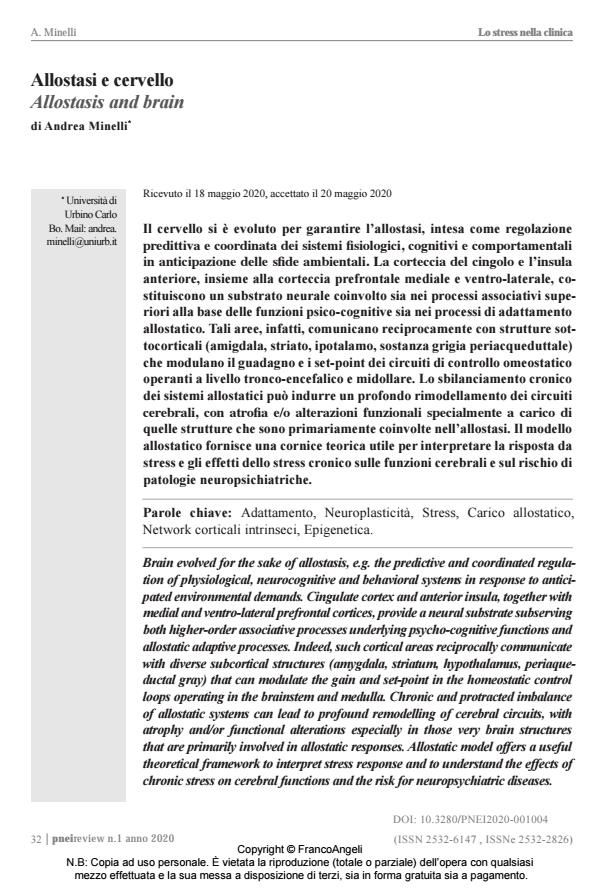Allostasis and brain
Journal title PNEI REVIEW
Author/s Andrea Minelli
Publishing Year 2020 Issue 2020/1
Language Italian Pages 9 P. 32-40 File size 99 KB
DOI 10.3280/PNEI2020-001004
DOI is like a bar code for intellectual property: to have more infomation
click here
Below, you can see the article first page
If you want to buy this article in PDF format, you can do it, following the instructions to buy download credits

FrancoAngeli is member of Publishers International Linking Association, Inc (PILA), a not-for-profit association which run the CrossRef service enabling links to and from online scholarly content.
Brain evolved for the sake of allostasis, e.g. the predictive and coordinated regulation of physiological, neurocognitive and behavioral systems in response to anticipated environmental demands. Cingulate cortex and anterior insula, together with medial and ventro-lateral prefrontal cortices, provide a neural substrate subserving both higher-order associative processes underlying psycho-cognitive functions and allostatic adaptive processes. Indeed, such cortical areas reciprocally communicate with diverse subcortical structures (amygdala, striatum, hypothalamus, periaqueductal gray) that can modulate the gain and set-point in the homeostatic control loops operating in the brainstem and medulla. Chronic and protracted imbalance of allostatic systems can lead to profound remodelling of cerebral circuits, with atrophy and/or functional alterations especially in those very brain structures that are primarily involved in allostatic responses. Allostatic model offers a useful theoretical framework to interpret stress response and to understand the effects of chronic stress on cerebral functions and the risk for neuropsychiatric diseases.
Keywords: Vaccines, Coronavirus, Virus nCoV-SARS-2, Pandemics, CoVid-19, Immunobiology.
- Stress and sport performance: a PNEI multidisciplinary approach Giulia Tossici, Valentino Zurloni, Andrea Nitri, in Frontiers in Psychology 1358771/2024
DOI: 10.3389/fpsyg.2024.1358771
Andrea Minelli, Allostasi e cervello in "PNEI REVIEW" 1/2020, pp 32-40, DOI: 10.3280/PNEI2020-001004